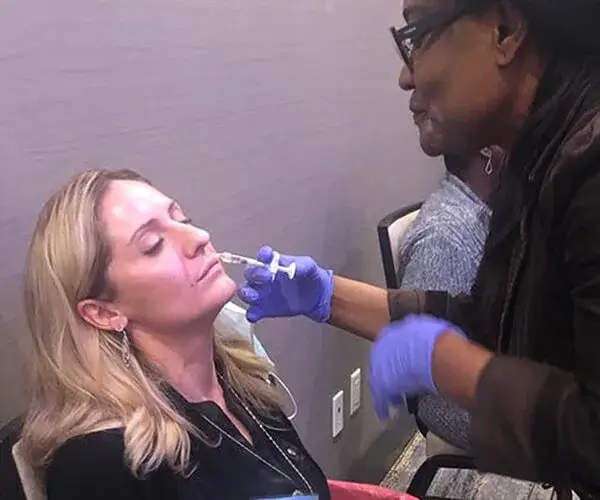How Much Is It to Dissolve Filler?
By Dr. Stephen Cosentino
PRESIDENT OF EMPIRE MEDICAL TRAINING
Among minimally invasive cosmetic procedures, dermal filler injection is second only to botulinum toxin injection (mostly Botox®) in popularity. U.S. medical professionals performed more than 3.4 million soft tissue injections in 2020.
Most of these involved hyaluronic acid-based filler, by far the most common type of filler on the market. Perhaps it’s no coincidence that hyaluronic acid filler results are the easiest to reverse. This requires a simple injection or injection series and can be performed in an outpatient setting. But it may carry an additional cost.
Read on to find out how much it costs to dissolve dermal fillers, what to expect from the procedure, and how to decide if it’s worth going through with.
How Much Is It to Dissolve Filler?
It costs anywhere from $0 to $500 to dissolve hyaluronic acid based filler. The exact amount depends on the cost of the active ingredient in the procedure, how much is needed, and whether the provider is willing to do the procedure for free.
The process requires one or more injections of hyaluronidase, an enzyme that breaks down the hyaluronic acid filler injected near the affected area. Hyaluronidase works anywhere in the body, but its effects are particularly noticeable in eye filler and lip filler reversals, areas where subtle changes in volume can produce noticeable changes in appearance.
Hyaluronidase costs vary by medical office and geographic location, but they’re generally lower than dermal filler costs, which run into the high hundreds per syringe. Your original provider is quite likely to work for free if they clearly made a mistake during the initial filler procedure. However, if you don’t trust them to perform the follow-up procedure and you go to a different provider, you should expect to pay for it.
How to Dissolve Hyaluronic Acid Fillers
Hyaluronidase injection is the most effective way to dissolve hyaluronic acid filler if you don’t want to wait months for it to dissipate.
However, it’s not something you should do on your own. Always work with a board-certified clinician who has completed an accredited dermal filler training course. They’ll determine how much hyaluronidase to use and precisely where to inject it for optimal results.
The procedure itself should take no more than 30 minutes. Once injected, the hyaluronidase breaks down the hyaluronic acid’s bonds over a period of 24 to 48 hours. You’ll notice significant volume reduction during this time, but the treated area may not look completely normal for a week or two as the body takes some time to reabsorb the broken-down material.
Are Hyaluronidase Injections Worth It?
Because providers often offer hyaluronidase at no charge to patients seeking a filler “do-over,” it tends to be worth it from a financial standpoint.
Other than the very low risk of allergic reaction, the main patient complaint about filler-dissolving injections is that hyaluronidase may also break down the naturally occurring hyaluronic acid near the injection site. This makes some patients uncomfortable and leads some to choose to simply wait the 6 to 18 months it takes for hyaluronic acid fillers to go away on their own.
However, hyaluronic acid naturally occurs in the body at much lower concentrations than in dermal fillers, so the cosmetic side effects generally aren’t noticeable to others.


